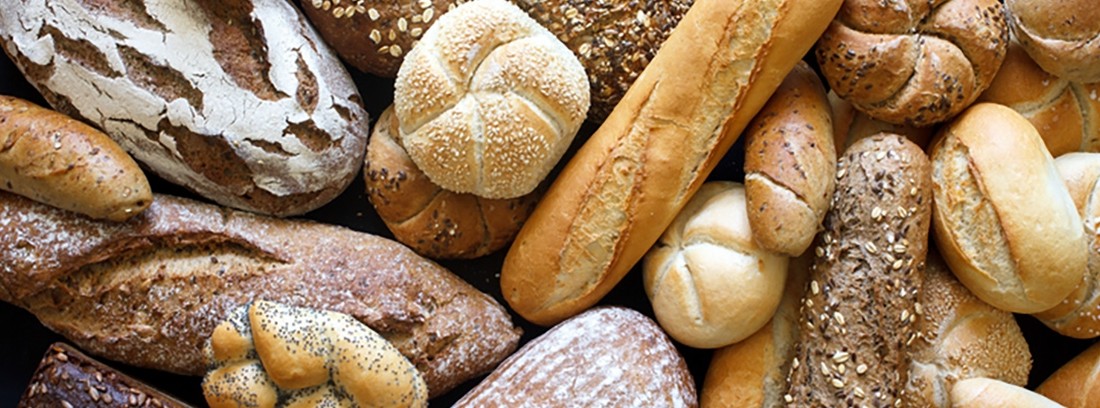Bread, a staple food

Very basic and very complex
Bread is a very simple food that, as a base, consists of water and flour. We can complicate this simple “recipe” as much as we want by adding walnuts, flax seeds, pumpkin, onion, garlic, carrot, etc. The bread that we usually use is usually made with wheat flour although it can also be prepared with rye, corn, spelled, etc. Without focusing on white wheat bread, we are faced with a product that provides us with around 230 Kcal per 100 g. It provides 47% carbohydrates, 8-9% protein and only 1.5% fat.
The sandwich
The handy sandwich can be very different depending on its preparation. While a bread with oil and lean cold cuts or vegetables can be very appropriate, a sandwich spread with margarine or butter and stuffed with fatty sausages provides us with a large amount of calories.
Types of bread
Depending on the shape, weight, and even the geographical area of manufacture, we find different types of bread with different names: some examples are the typical gun bread from Madrid, the muffin from Andalusia, the peasant bread from Catalonia, the French bagette, the loaf, the flute or the ciabatta. Apart from what has been commented, we find different varieties of bread since in order to improve the texture, the nutritional composition, the taste, the appearance or several of these parameters, different types of food are added that make it one more product. complex, attractive and nutritious. Some examples are: multigrain bread, milk bread, seed bread, carrot bread, onion bread, or even “preñao bun”, which includes chorizo.
ATTENTION TO YOUR ACCOMPANIMENTS Bread is not as fattening as it is believed, the main risk of bread is that we accompany it with fatty foods such as cheeses, sausages, butter, etc., that we use it to dip in sauce or that by chopping, chopping we consume an excessive amount.Who is it good for and who is not?
Although such a basic food seems to have no drawbacks, there are people who should avoid certain types of bread.
It is recommended for:
- Children and athletes. In the event that we need to provide food quickly and comfortably (after a workout or as part of a complete snack), a sandwich can be a good way to provide carbohydrates and proteins, easy to carry and consume.
- Wholegrain and seed breads can help supplement along with fruits, vegetables, etc. the fiber needs of the body.
- Low-calorie breakfasts and snacks. Being less energetic than other foods rich in carbohydrates such as breakfast cereals, cookies or of course pastries, it can be a good option as breakfast or snack in diets in which kilocalories are limited.
It is not suitable in case of:
- Celiacs: people with celiac disease do not tolerate the gluten contained in breads made with wheat flour.
- Other allergies or intolerances: cases of allergy to alpha amylase in bread have been described, and bread made with milk should also be avoided in lactose intolerant people.
- Hyperglycemia: white bread from refined flours has a high glycemic index that causes more difficulty in controlling glycemia than other whole grain breads, seeds, etc. Due to their fiber content, they cause slower absorption.
THE RECIPE
Carrot and walnut bread.
Ingredients:
4-5 large carrots 1 glass of sugar 1 glass of flour 1/2 glass of oil 1/2 cup of melted butter 2 eggs Salt
Preparation
Wash, peel and grate the carrots. Mix the grated carrot, the sugar and the 2 eggs in a bowl and stir until a homogeneous mixture is created. Add the baking soda and salt to the flour and stir, then slowly add to the dough created previously and mix well.
- Benefits: practical to carry and consume, nutritious and, in the case of being whole, rich in vitamins, minerals and fiber.
- Ideal food for: children, athletes and people who require food that is easy to transport and eat.
- Bread is not as fattening as is believed; it is the accompaniments and fillings of the sandwich that can increase the energy and fat value of the dish.
Mercè GonzaloDiploma in Human Nutrition and Dietetics
(Updated at Apr 14 / 2024)